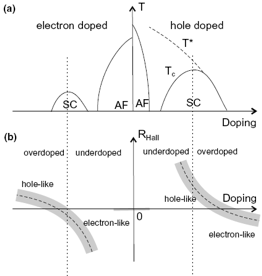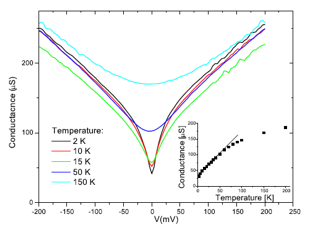The Dutch Organisation for Research (NWO) has granted a VENI contract for the period 2005-2008 in order to study the mechanism of high-Tc superconductivity in borides and oxides by means of epitaxial multilayers.
Electron-hole coupling
Various independent measurements give indications from the simultaneous presence of mobile electrons and holes in the high-Tc cuprate superconductors. We are investigating the consequences of interactions between those charge carriers and their possible relation to high-Tc superconductivity. This research is done in close collaboration with Hans Hilgenkamp.

Electron-hole coupling in high-Tc cuprate superconductors
A. Brinkman and H. Hilgenkamp,
Physica C 422, 71 (2005).
Oxide tunnel junctions
By means of pulsed laser deposition with in-situ RHEED monitoring, epitaxial tunnel junction with high-Tc oxides are realized. The main used materials are LaSrCuO as the superconductor and SrTiO3 as the barrier material. The results will be published soon. An example of a tunnel measurement that reveals the pseudogap in LaSrCuO is shown below.

Boride superconductivity
See the research description under Magnesiumdiboride. A recent review can be found in
MgB2 tunnel junctions and SQUIDs
A. Brinkman, J.M. Rowell,
Physica C 456, 188 (2007).
